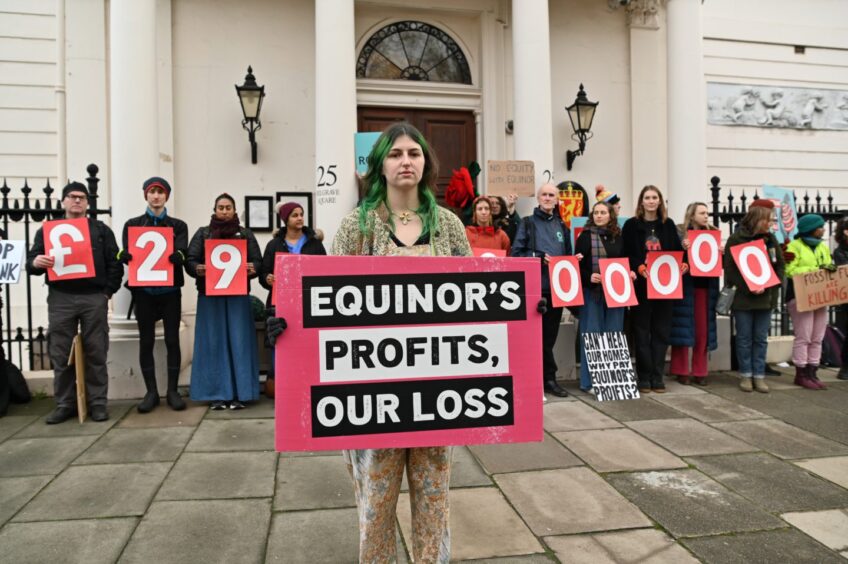
Oil and gas supermajors have all dipped their toes into greener waters in recent years, but some are finding that the temperature has cooled – despite their oiled feathers.
Equinor followed BP and Shell this month by scaling back on low-carbon projects and dropping investment targets for renewable energy.
The Norwegian energy company revealed in November that it was considering cutting 20% of staff from its renewable energy division, as it began to scale back on new projects.
“Investors have continued to question whether the pace of movement by BP and Equinor, and others, away from hydrocarbons towards renewables is too fast – given the wider challenges posed by managing this transition more widely,” says Russ Mould, investment director at AJ Bell.
“These include our ongoing reliance on the internal combustion engine and the convenience it provides, the challenge of connecting new energy sources to existing grid infrastructure and concerns over the reliability and viability of renewable energy as a source of baseload energy – especially given the discomfort caused by what has been, at times, a spookily windless winter.”
Equinor has made some of the boldest commitments to investment in renewable energy of all the European supermajors.
In 2022, the oil company launched its energy transition plan, aiming to reach net zero by 2050. That strategy included allocating more than half of its annual gross capital expenditure to renewable energy and low-carbon solutions by 2030.
The company has embarked on a plan to invest $23 billion in renewable energy between 2021 and 2026.
However, in the first week of February, Equinor updated its energy transition plan during a capital markets update, retiring its capex ambition after reducing its investments in renewables and low-carbon solutions by 50% between 2024 and 2025 compared to last year’s outlook.
‘Macroeconomic headwinds’
On the company’s latest earnings call, Equinor president and chief executive Anders Opedal said: “The pace of the energy transition is uneven. We have the flexibility to adapt. We are well positioned to create value in this context.”
However, he noted that business segments such as offshore wind and hydrogen had been impacted by macroeconomic headwinds.
“Inflation, interest rates, supply chain issues and regulatory uncertainty reduces the pace of the energy transition,” he said. “We adapt to these realities, both phasing and prioritising investments to maximise returns.”
This month, the oil supermajor deepened its cuts in the renewables sector and doubled down on its oil and gas investments in the UK.
These include Equinor’s flagship oil project Rosebank in the North Sea, which had consents for development and production revoked this month after a Scottish appeal court overturned approval.
Equinor tied its UK oil and gas assets with Shell’s in December to form the North Sea’s biggest producer, in a move that consolidates risk to the Rosebank oil field and Shell’s ongoing Jackdaw gas project, which also had consents rescinded in the appeal court decision.
Doubling down
Speaking to Energy Voice, Equinor’s head of UK media relations and spokesperson for renewables and low-carbon solutions Alice Baxter clarified the company’s commitment to the UK’s oil and gas sector.
“Equinor has been a reliable energy partner to the UK for over 40 years, providing a stable supply of oil and gas, developing the UK’s offshore wind industry, and pioneering solutions to decarbonise the UK economy.
“By proactively joining forces with Shell, we believe we are doing the right thing in creating a stronger, more efficient, robust and sustainable position in the North Sea. This will enable us to support UK security of supply and be a positive contributor to the UK economy.”
“With the once prolific basin now maturing and production naturally declining, the combination of both Shell and Equinor’s heritage, shared portfolios and expertise will allow continued economic recovery of this vital UK resource.”
Baxter added: “Equinor will continue to play a vital role in the UK energy sector, including oil and gas, in the years ahead.”
Both Equinor and Shell plan to continue developing the Rosebank and Jackdaw oil and gas projects, despite the recent court order. The Rosebank project alone represents £8.1bn of investment, according to Equinor’s estimates.
Carbon capture and storage (CCS) is another way that the supermajors are attempting to adapt their core expertise in order to survive in a low-carbon world.
BP and Equinor intend to build new gas-fired power plants at the Net Zero Teesside industrial cluster in the north of England using CCS to sequester carbon emissions. The project is understood to have received a £6bn government loan guarantee.
BP, TotalEnergies and Equinor’s joint venture project, the Northern Endurance Partnership, was awarded the UK’s first ever carbon storage permit in December to provide infrastructure to transport and store carbon from the East Coast Cluster.
‘Uneven pace’ of the energy transition
Equinor’s chief executive Opedal cited growing energy demand and market uncertainty, as well as the pace of the energy transition, as drivers for the company’s strategic shift at its capital markets day this month.
Equinor’s scaling back of renewables investments follows similar moves by BP and Shell as they seek to appease shareholders and shore up returns.
BP posted a 36% slump in annual profit to $8.9 billion for 2024 this February. Following BP’s drop in profits, investment bankers were rumoured to be considering a possible merger between BP and Shell to create a national energy company – although the likelihood of this actually happening appears remote.
“BP and Shell remain among the largest investors in the energy transition, but society will be consuming oil for some time to come and this remains the core of their business,” said Jon Ferris, an analyst at LCP Delta.
“There will be points in the cycle when shareholders focus on the short-term profitability, and the scale that is required for exploration and production of oil. However, they will be back, as they can’t afford to miss the long-term shift of the energy transition.”
It is a perennial possibility, one that surfaced in 2004 when boardroom opposition was understood to have blocked the discussions, and again in 2007. However, a BP-Shell merger cannot be ruled out, according to analysts, who warn that such a deal would be “complex”.
Mould said: “2023-24’s round of mega-mergers in US hydrocarbons has given the story fresh impetus.
“It would be a complex deal, from sorting out who runs it to the optimal corporate structure and capital allocation (which assets are kept, which are not) and how to extract potential cost synergies to the best effect.”
The second instalment in this two-part series will explore what the future may look like for BP and Shell…

 © Supplied by Stop Rosebank
© Supplied by Stop Rosebank
